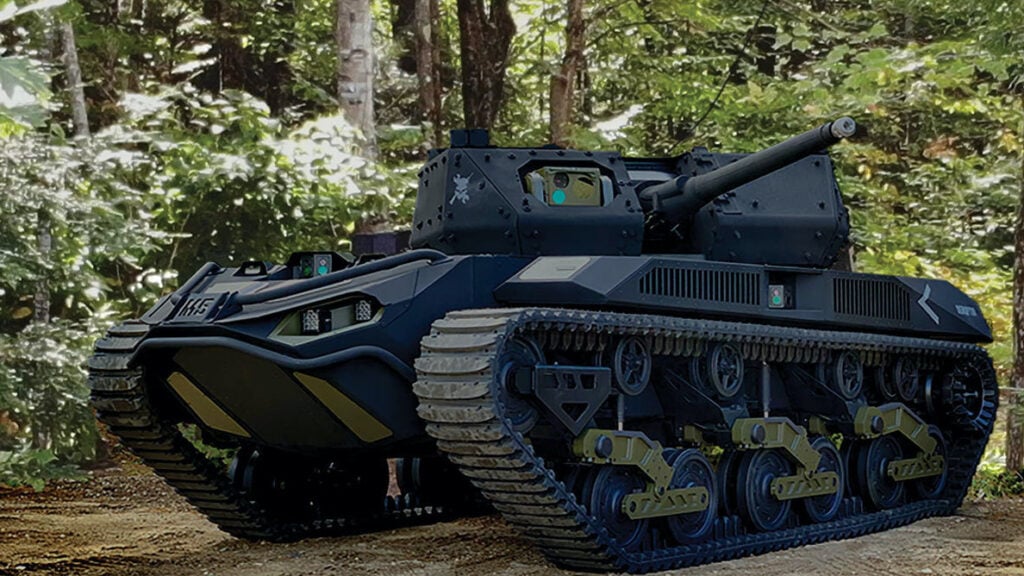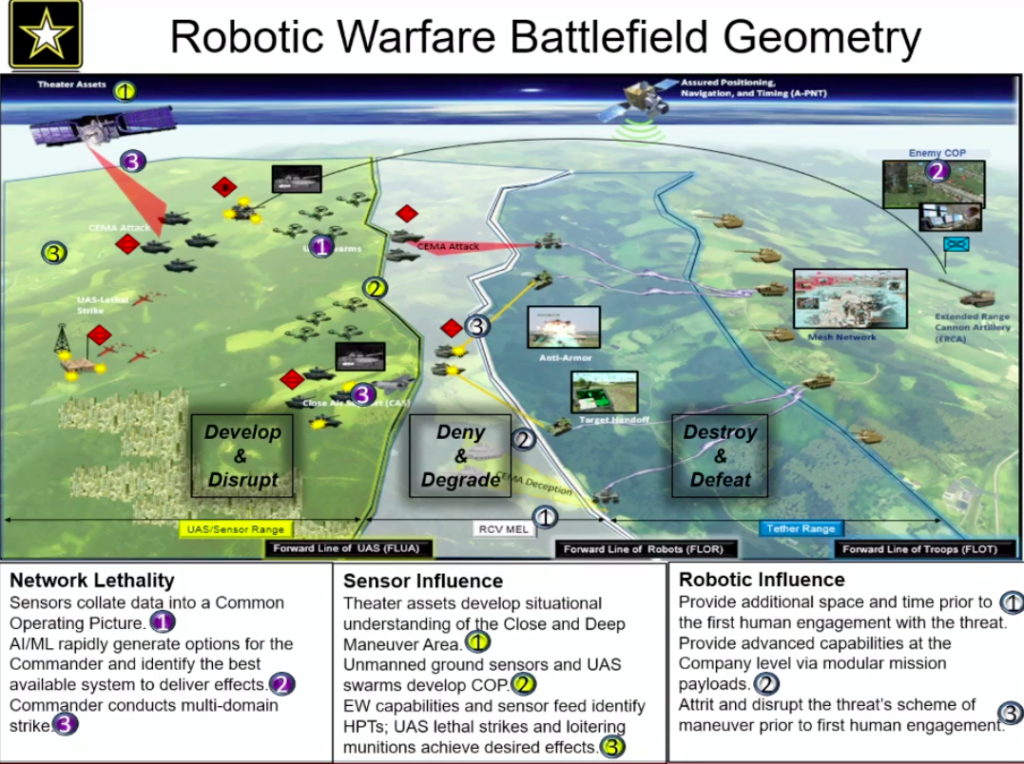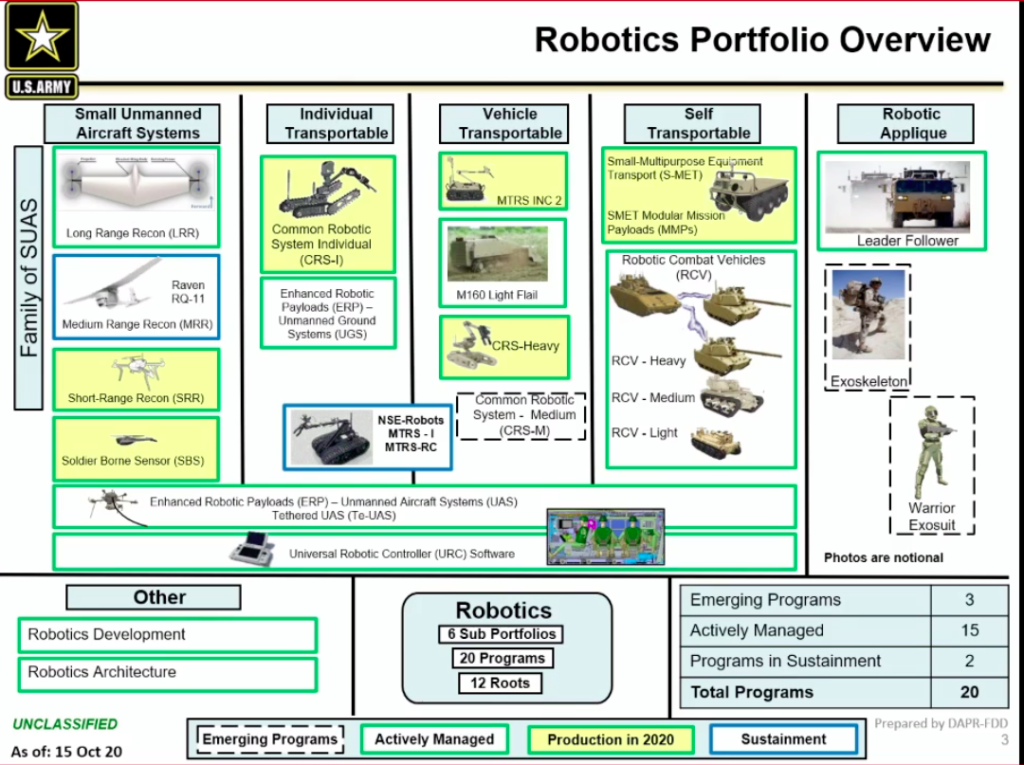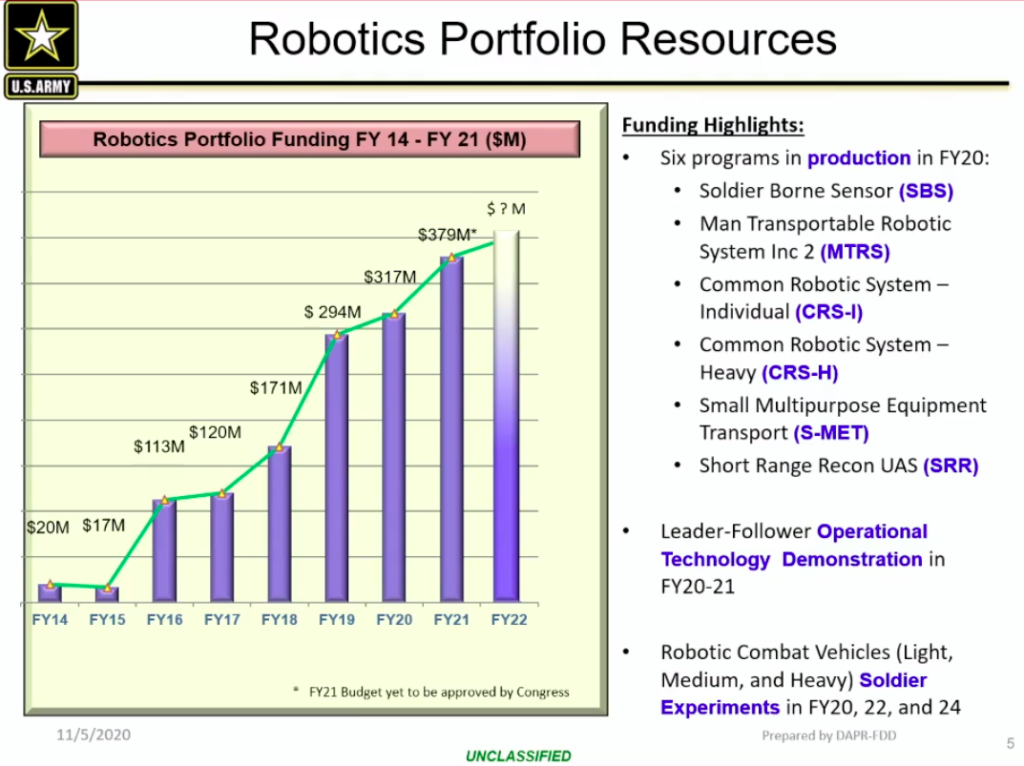By SYDNEY J. FREEDBERG JR.

WASHINGTON: The Army wants the first casualty of the next war to be a robot, not a human being. But no amount of high technology will allow a bloodless victory, warned the new commander of the service’s Maneuver Center at Fort Benning, which runs tank and infantry training. So instead of devising some futuristic all-new force, Maj. Gen. Patrick Donahoe and his staff are reviving battle-tested Cold War concepts – like tank-infantry teamwork and robust division-level formations – and updating them with a large dash of unmanned systems.
In guerrilla warfare in Afghanistan and Iraq, the Army beefed up its brigades to operate largely independently, with higher echelons such as divisions and corps in a supporting role. For future large-scale wars, Donahoe said, the Army wants to strengthen the division, restoring the brigade-strength artillery and reconnaissance (“divisional cavalry”) elements eliminated in the 2000s. This combination of long range firepower and scout forces — both air and ground — will allow division commanders to fight and maneuver over distances much larger than what their subordinate brigades can cover.
To compensate, Brigade Combat Teams may yield some of the specialized assets they’ve accumulated since the Cold War. “The BCT will probably be smaller [and] will have to get augmented for different tasks by the division,” Donahoe told the NDIA Armaments, Robotics, & Munitions (ARM) conference. “But it will be more technically technologically enabled [with] autonomous systems.”
Army studies of recent conflicts – Russia vs. Ukraine, Armenia vs. Azerbaijan – shows you can have a dramatic impact by adding a small infusion of 21st century tech to a largely Cold War force, Donahoe said. How? One approach the Russians have employed to devastating effect is to use drones to spot targets for rocket launchers. Likewise, while the US Army is developing a host of new missiles, armored vehicles, and aircraft, most units will be using Reagan-era hardware for years to come. In essence, Donahoe wants to organize these existing weapons in new formations and add drones and ground robots to scout ahead.

The Army sees drones and ground robots advancing ahead of humans in future wars. (Enemy forces are at the left of the chart, friendly forces are moving right to left).
A Counter-Revolution in Military Affairs
Donahoe’s approach is at odds with a longstanding strain of technophilia in the Army. Particularly in recent months, I’ve noticed some generals reciting, in various forms, the mantra of the Future Combat Systems program cancelled in 2009: the idea that technology would let US forces “see first, understand first, act first.” Donahoe took issue with that techno-optimism in his remarks on Thursday.
“We know from our experience of the last 20 years that technological leaps are great, but they can’t give you this omniscient view of the world,” Donahoe warned. “This goes back to [the] late 1990s, early 2000s, when we had this drumbeat in United States military circles of this ‘Revolution in Military Affairs,’ [predicting] we will know everything, we will have such information dominance, we will be able to see first, act first….[Today], you hear some of the same arguments being made.”
“Be cautious of revolutions in military affairs,” said Donald Sando, Donahoe’s civilian deputy and an intellectual mainstay at Fort Benning for many years. “We can’t hope endlessly that technology will make warfare easier or less brutal or less costly, [because] The reality is, it doesn’t; it changes it. It makes it harder in many cases.”

The Army’s Future Combat Systems (FCS) program, cancelled in 2009, relied on sensors, networks, and superior information instead of heavy armor.
“It is important that we use technology to the absolute best we can,” said Donahoe. “But we should never forget that it’s the soldier on the ground, it’s the tank crew in close combat, it’s that infantry fighting vehicle closing with the enemy… The tank-infantry team will remain the primary way we impose our will on the enemy in close combat.”
“That doesn’t mean we’re going to [send] those forces into a meatgrinder” without first trying every high-tech trick in the book, Donahoe said.
Historical data on direct-fire engagements “shows that our enemies generally shoot first 80 percent of the time,” Sando said. “We don’t like those odds, [so] we want to avoid the close fight if we can. If we can’t avoid it, we want to enter it under conditions that are favorable to us.”
But how? Current Army doctrine prescribes “making contact with the smallest element.” In layman’s terms, if you must stumble upon the enemy and get shot at (the formal term for this is a, “meeting engagement”), then do it with the smallest vanguard possible, giving the main body time to prepare and maneuver without being pinned down. In the future, Donahoe said, the goal will be to make first contact with an unmanned element.
Cold War doctrine envisioned engaging the enemy along what’s called the Forward Line Of Troops, or FLOT. In the new concept, according to a briefing at the conference, a Forward Line Of Unmanned Aerial Systems (FLUA) will fly ahead through no-man’s-land into enemy-held territory, followed by a Forward Line Of Robots (FLOR) on the ground, followed in turn by the Forward Line Of (Human) Troops. The unmanned systems will flush out the enemy, stumble into meeting engagements and ambushes, take and receive the first hits, and map the enemy position for the human troops coming along behind them.
Of course, the Army can’t do this today. To execute the concept in reality, they need a lot more unmanned systems, so they’re going to build them.

The Army is developing a wide range of unmanned systems, from palmtop mini-drones (the Soldier Borne Sensor) to self-driving supply trucks (Leader-Follower) and robot tanks (RCV-Heavy).
Robots For Every Echelon
To see the enemy before they shoot a human soldier, the Army wants to issue reconnaissance drones to units at every echelon, from long-range aircraft to palm-top micro-drones:
Division commanders already have the Army version of the Predator, the MQ-1C Grey Eagle; there’s a long-term plan to replace this with a new Advanced Unmanned Aerial System (AUAS) but this is pure PowerPoint so far.
Brigades currently make do with the RQ-7B Shadow, which requires a runway and extensive support equipment, and whose engine noise often warns enemies to hide from its approach. The Future Tactical UAS (FTUAS) program is now field-testing four possible replacements, all of them designed to operate without a runway, with minimal support, and with much less noise.
Battalions don’t have their own scout drones today, so the Army is developing formal requirements for small UAS known as Long-Range Recon (LRR).
Companies will continue to use the four-pound RQ-11B Raven, which soldiers launch by picking it up and throwing it into the air.
Platoons will get a Short-Range Recon (SRR) mini-drone. A decision to start production is pending, a briefer said, and if that goes ahead as planned, the first SRRs will go to operational units in 2021.
Squads are already receiving the Soldier-Borne Sensor (SBS) package, which consist of two Black Hornet micro-drones – small enough to land on the palm of your hand – plus a control unit and charging station.
Ground robots lag behind the aerial systems. It’s actually easier to program a computer to fly through empty air than to maneuver around rocks, trees, and ditches. But the Army is developing new Unmanned Ground Vehicles for reconnaissance, combat, and resupply:
The Robotic Combat Vehicle (RCV) Heavy is basically an unmanned light tank, in the 20 to 30-ton range. The first experimental RCV designs will be field-tested in 2023.
Textron is building an experimental 10-ton RCV-Medium, based on its Ripsaw mini-tank, while Qinetiq is building the seven-ton RCV-Light. (The contracts cover just eight vehicles for experiments in 2022, not full-scale production). These smaller Robotic Combat Vehicles are multi-purpose tracked machines that can carry supplies, sensors, jammers, or remote-controlled weapon systems.
The next size down is the Small Multipurpose Equipment Transport (S-MET), a wheeled vehicle much like a militarized golfcart. General Dynamics won the production contract, and the Army plans to acquire 624 S-METs through 2024. The S-MET’s primary mission is to trundle along behind foot troops carrying up to 1,000 pounds of supplies, but it could also be fitted with sensors and even weapons to scout ahead.
The Army is also converting manned supply trucks into self-driving Leader-Follower vehicles, fielding a tracked mine-clearing robot called the M160 Flail, and modernizing its fleet of remote-controlled bomb-squad-style robots.

Army funding and fielding of robotic systems have grown dramatically in recent years.
No comments:
Post a Comment